Best delay pedals 2026: Elevate your tone from subtle to stratospheric
Make your tone massive with our pick of the best delay stompboxes from Line 6, Boss, Strymon and more
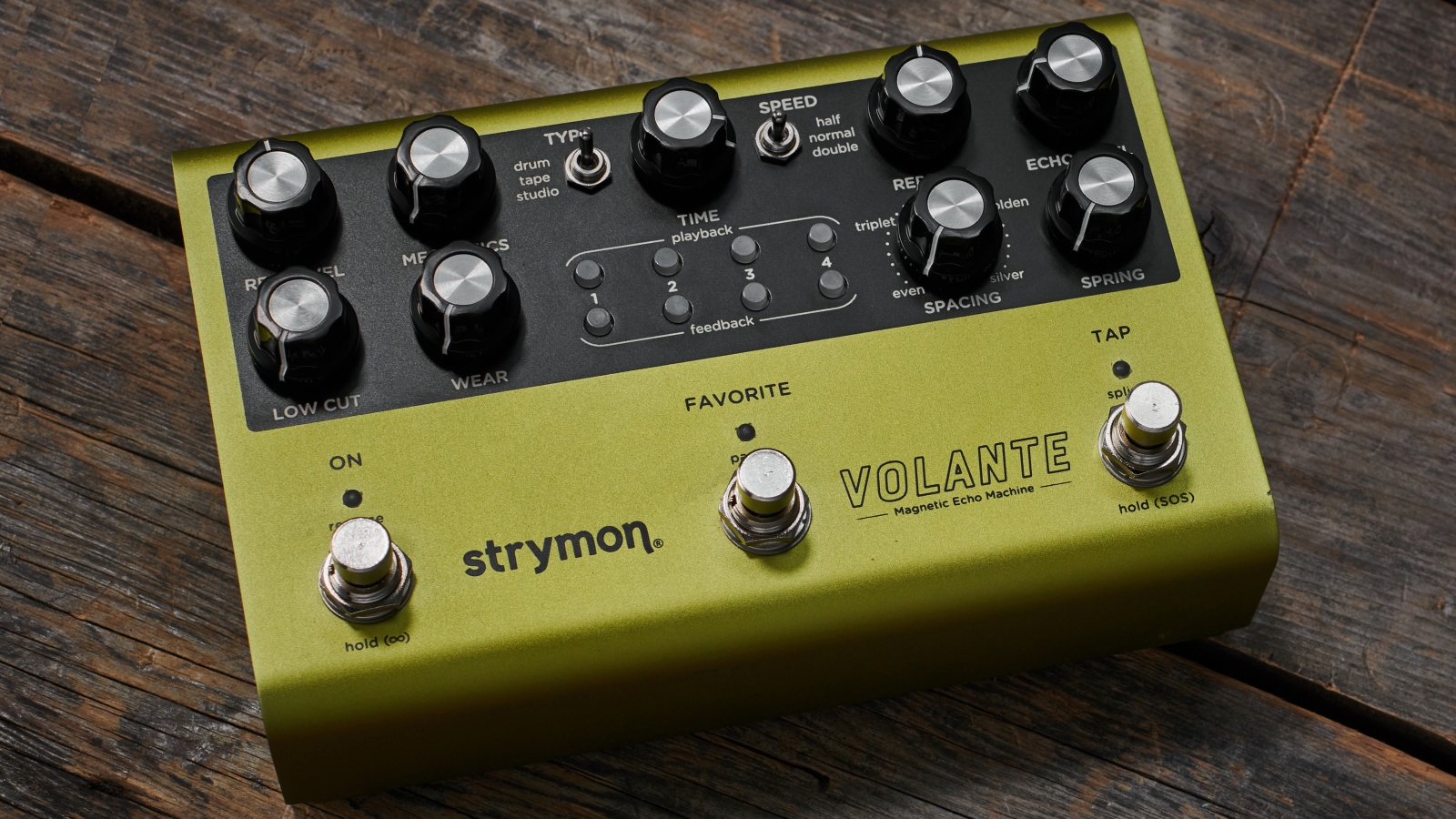
Any guitarist on a mission to build a pedalboard should make getting hold of one of the best delay pedals among their first tasks. The delay pedal is a super versatile effect that changes your sound unlike pretty much anything else, and best of all, it inspires creativity.
Just about all of your favorite artists will have experimented with delay, and for some it becomes as intrinsic a part of their sound as the guitar or distortion they use, such is the power of delay!
Delay as an effect has been around for a long time and some of the very first analog delay effects pedals remain among the best, while other, newer digital delays are pushing the boundaries of warping time. Regardless of what you are looking for in a delay pedal, from simple slap-back to stacked stereo delays, there will be something tailor-made for you, and you might just find it on our list.
If you’re brand new to delay pedals, scroll to the FAQs section to find out about how they work and why they might be great for your pedalboard.
Guitar Player recommends
For us, it doesn’t get much better than the Line 6 DL4 MkII. A legendary delay pedal given a modern reboot, it’s not only got fantastic delay sounds but also houses reverb and a looper, making it one of the most complete time-based effects pedals around.
If you want what the pros are using, then it’s all about the ubiquitous Strymon TimeLine. Packed with 12 different delay sounds, 200 presets, and a built-in looper, it’s the delay pedal of choice for many a touring guitar player.
For those who are looking to be a bit more budget or space conscious, the Boss DD-8 gives you lots of sounds with a compact form factor. With Boss’ trademark clean, noise-free operation and a wealth of sounds that go from analog to shimmer, you get a lot of bang for your buck with this one.
Best overall

Specifications
Reasons to buy
Reasons to avoid
The Line 6 DL4 MkII is a reboot of a now legendary digital delay pedal that’s been heard on countless recordings since its inception in 1999. Lovingly known as the ‘green monster’, this new version packs even more sounds and features into a unit that is slightly smaller than the original.
If you’re after classic analog delay sounds then the ones here are pretty much indistinguishable from the classic pedals and machines they’re based upon. All of the classic DL4 tones are available, as well as a host of more modern effects sounds which make it probably the most complete digital delay on the market.
Add in the bonus reverb sounds and you’ve got an incredibly complete soundstage to pick from, making it a proper Swiss army knife for time-based tones. The looper is as usable as ever, with an increased looping time and the intuitive functionality that made it a sleeper hit in the early noughties.
Read the full Line 6 DL4 MkII review
Best multi-mode
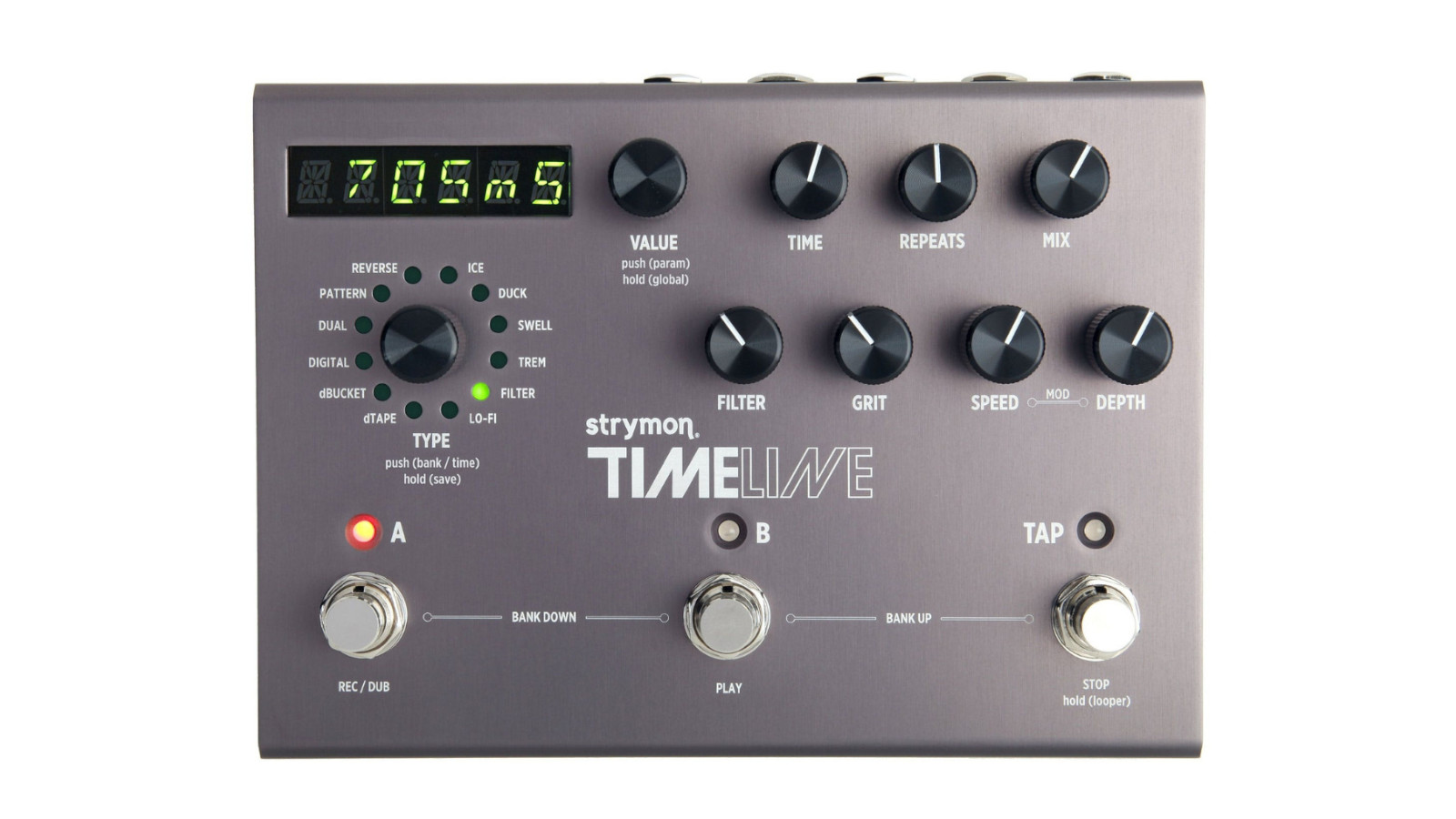
2. Strymon TimeLine
Our expert review:
Specifications
Reasons to buy
Reasons to avoid
Present on more pro ‘boards than we care to remember, the Strymon TimeLine delay pedal is about as close as it comes to industry standard these days. Packed full of sounds and ways to tweak them, it’s the dream delay pedal for players who like to painstakingly craft their tones.
There are 12 main tones on offer here, ranging from tape and bucket brigade-type delays right through to lo-fi and filtered sounds. They’re all eminently tweakable as well, with the Filter and Grit controls allowing you to dirty up the tones, or you can add modulated sounds to your tails. You can pitch-shift your repeats and even get multi-head tape and rhythmic multi-tap sounds.
It’s not just the sounds that are great. Thanks to the myriad of connectivity options there are loads of ways to integrate into your existing rig and further manipulate the sounds, which is partly why it’s so popular on pro pedalboards. Add an expression pedal to control parameters in real-time, run other pedals in the built-in feedback loop, and use MIDI control for easier preset selection; it really can do it all.
Best digital delay
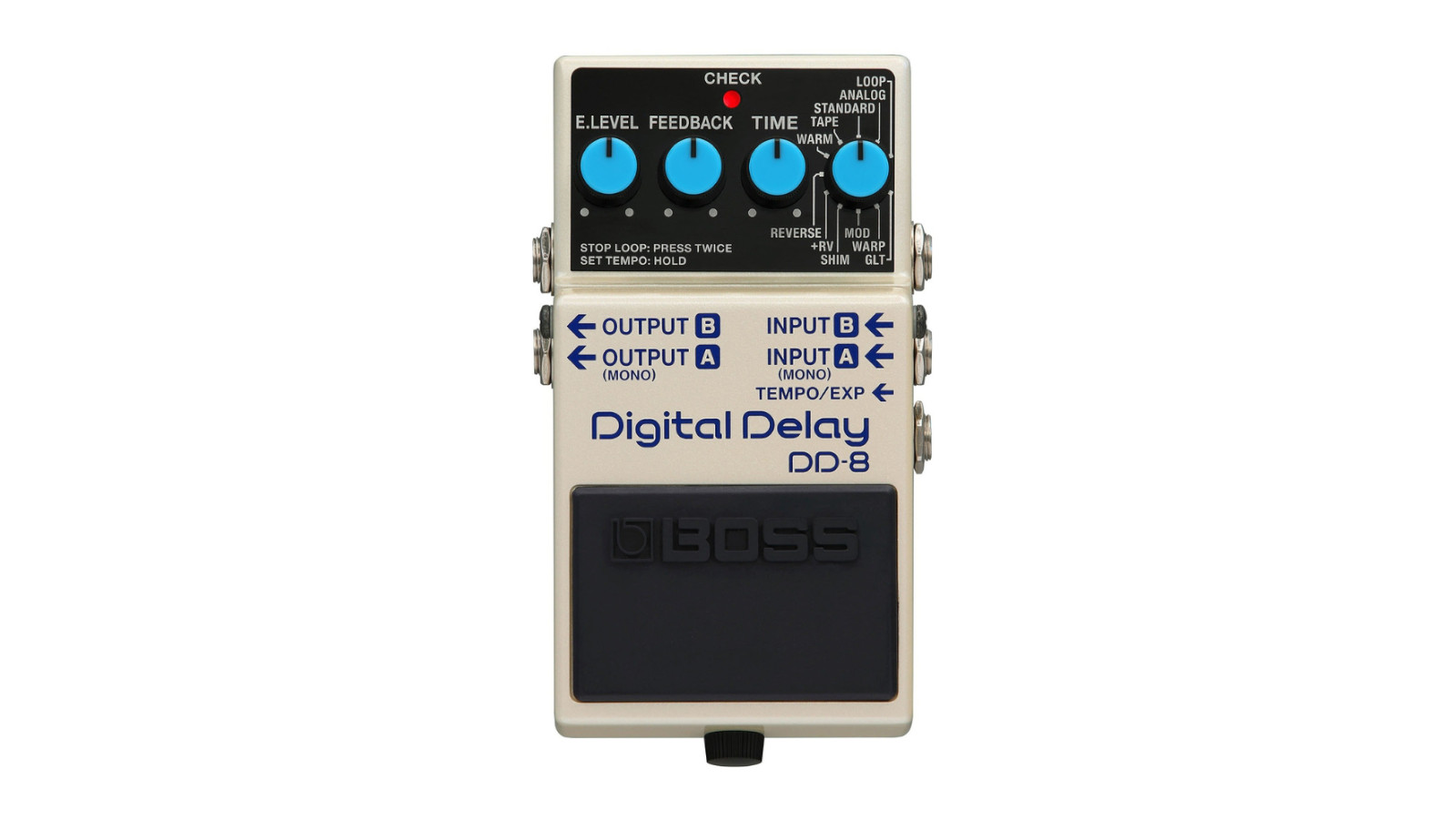
3. Boss DD-8
Our expert review:
Specifications
Reasons to buy
Reasons to avoid
Boss’ original delay pedal, the DD-3 has been around for a long time now, so it was about time it got an upgrade. Enter the Boss DD-8, which does everything one of the best compact delay pedals ever made does, and loads more.
Despite the name, there are actually 11 different modes in the DD-8 if you count the looper. All the classic delay sounds like tape, analog and digital are here, as well as lots more esoteric tones like shimmer, modulated, and even a delay-plus-reverb option.
With an additional footswitch, you can also unlock extra functionality from certain sounds, making the pedal even more sonically flexible. Add in stereo operation for some seriously wide sounds and the option for multiple footswitches, or one expression pedal, and you’ve got a lot of delay pedal for comparatively little cost.
Best on a budget
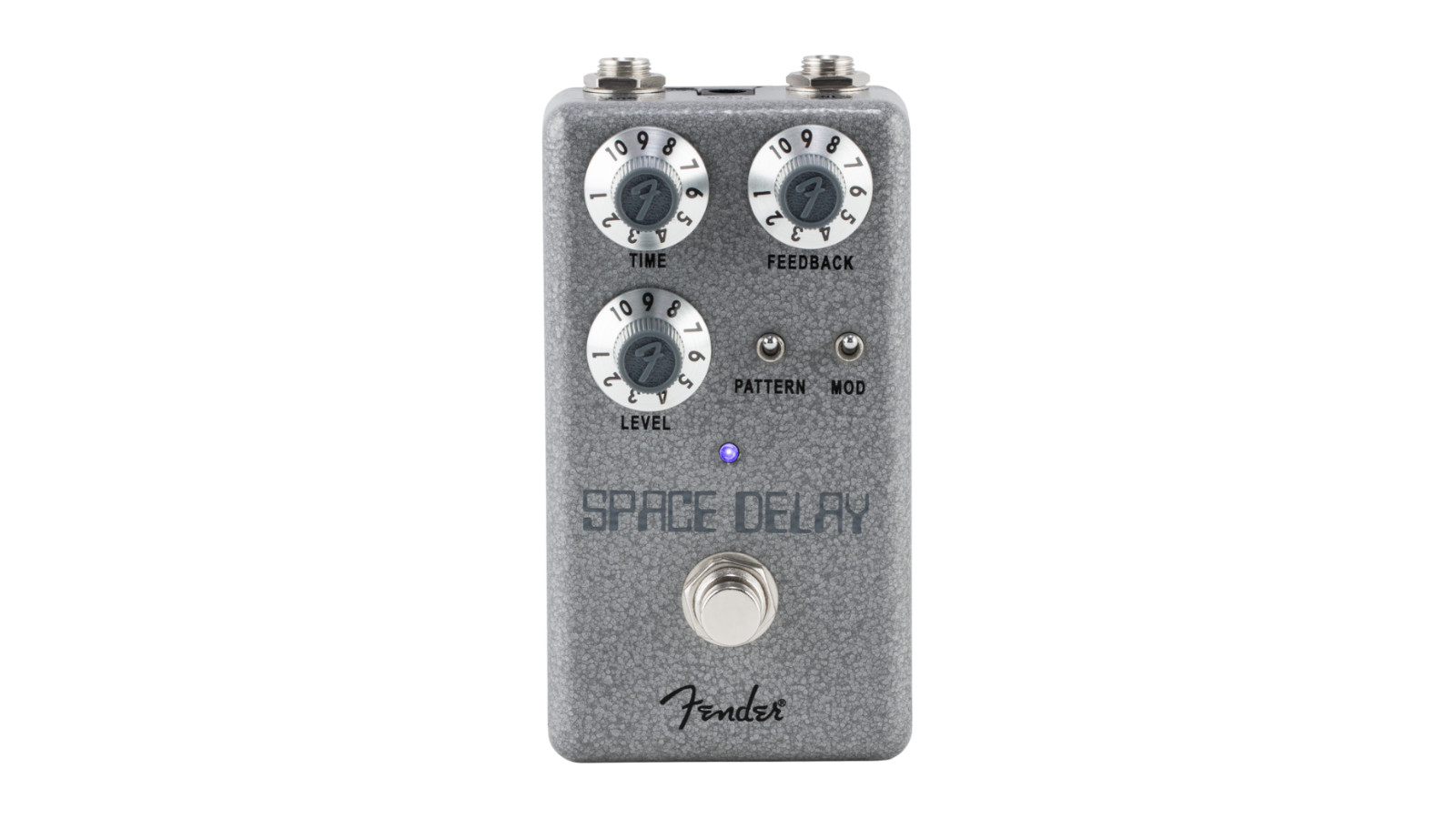
4. Fender Hammertone Space Delay
Our expert review:
Specifications
Reasons to buy
Reasons to avoid
If you want a simple delay pedal without the bells and whistles, or you’re just a bit short of cash, the Fender Hammertone Delay pedal is one of the better options out there for cheap delay stompboxes.
There’s loads of flexibility thanks to the useful pattern control, which gives you various multi-head tape sounds. There’s a quarter-note delay and two rhythmic patterns that are pre-programmed, giving you that classic Space Echo and Echorec-type sound without having to splash the cash.
The modulation control can be augmented by dipswitches inside the pedal, and overall there’s a really nice feel to the way the delay tails degrade as they repeat. It’ll do that infinite oscillation style trick as well as act as a nice slapback, making it super versatile if tape delay sounds are your bag.
Read the full Fender Hammertone Space Delay review
Best with modulation

5. MXR Carbon Copy
Our expert review:
Specifications
Reasons to buy
Reasons to avoid
Where a majority of delay pedals are now digital, the MXR Carbon Copy is an outlier in that it’s a genuine analog delay. This means it sounds quite unlike the majority of the other pedals on this list, with a distinctive tone that’s all its own.
There’s a dark warmth to this delay pedal that’s the antithesis of some of the cleaner delay sounds on others. The extended delay time of up to 600ms is more than a lot of other pedals, meaning it can do spacey and ambient just as well as it does vintage slapback.
Internal trim pots control the width and speed of the modulation although they’re a bit of a pain to access as you have to remove four screws to get to them. This is the same if you’re using battery power too so we’d recommend a pedalboard power supply for one of these. Despite that singular shortfall, its delay character sets it apart from many others on this list, with a sound that will keep you coming back.
Best Memory Man-style
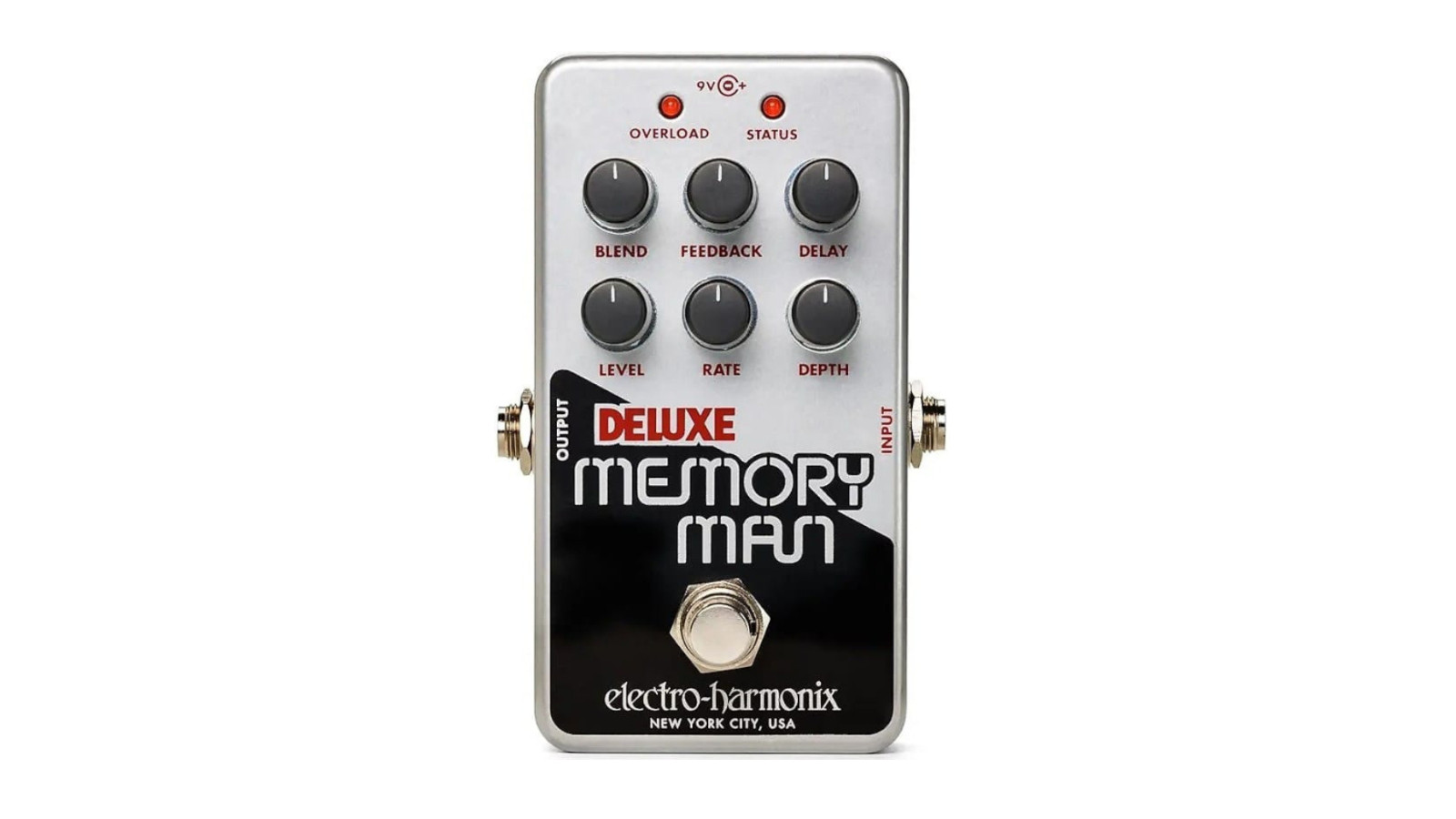
Specifications
Reasons to buy
Reasons to avoid
With the original being introduced in 1978, the Electro-Harmonix Nano Deluxe Memory Man gives you all the vibe of the original without having to sacrifice so much of your pedalboard real estate.
The sound is lovely and clear despite the analog design and the feedback control does everything from slapback to long ambient delay. It does that bucket-brigade sound really well, but it’s when you start playing with the modulation sounds that things get really interesting.
You can dial in a chorus or rotary-type effect to your delay tails, making for some incredibly expansive sounds. The unusual level knob doesn’t actually control the output, but instead adjusts the input, meaning the pedal can add some drive and boost to your overall tone.
Read the full Electro-Harmonix Nano Deluxe Memory Man review
Best modular delay

7. Meris LVX Modular Delay System
Our expert review:
Specifications
Reasons to buy
Reasons to avoid
If you’ve tried every delay out there and still yearn for more, the Meris LVX Modular Delay System will offer enough depth to please even the most adventurous tone seeker. Packed full of features and functionality, the LVX is less delay pedal and more an instrument in its own right.
The Meris LVX will function as a simple delay pedal if you want it to, but it will also help you create otherworldly soundscapes that shift and undulate beneath your guitar tone. Create unruly rhythmic patterns, step sequencer-type pitch-shifting delays, synth pads, infinite reverb tails, and bass-heavy rumbles that will evoke horror and sci-fi soundtracks.
It sounds complex, yet it’s all easily manipulated via an intuitive menu system accessed from a few knob presses and turns to adjust your chosen parameter. This display makes it clear what’s contained within your sound and how it’s being manipulated, making for an incredibly immersive experience. Ideal for adventurous and progressive guitar players.
Best bucket brigade

8. Boss DM-101 Delay Machine
Our expert review:
Specifications
Reasons to buy
Reasons to avoid
Already being hailed as one of the finest analog delay pedals ever made, the Boss DM-101 Delay Machine takes the best of true analog sound and marries it with the convenience and usability of digital.
Housing 12 bucket brigade delays, you get a huge range of sounds from the classic analog warmth of the original BBD, to tape-style delays infused with BBD character, to a clean modern sound with a defined high end. There are loads of great stereo sounds and plenty of options to shape the modulation cycles.
Many of the presets feature the ability to choose your waveform, as well as manipulate just how the modulation is applied with the Mod Rate, Mod Depth and Variation controls. Store up to 127 presets and utilize extra functionality with external footswitches or expression pedals. It’s a perfect marriage of analog and digital for the modern guitar player.
Best retro delay

9. Strymon Volante
Our expert review:
Specifications
Reasons to buy
Reasons to avoid
Aiming to recreate the classic tones of the Binson Echorec, the Strymon Volante is a comprehensive tape and drum echo machine that sounds absolutely incredible. It’s got a lot of depth, but take the time to master it and you can dial in some spectacular vintage tones.
There are three different echo types but all are very distinct, and when you take into account the number of parameters available to tweak, you can get an incredible amount of sounds out of it. Dial in Gilmour or Hank Marvin-esque echo tones, release your inner Sun Studios slapback, or dial in Space Echo style sounds – chances are if there’s a vintage echo tone you love, the Volante can handle it.
A powerful part of the Volante is the individual playback heads that can be activated or deactivated individually. They can operate at full or half volume and can even be sent to independent sides when using the pedal in stereo. Add in a wealth of other controls, the ability to use a footswitch and MIDI control and you’ve got one of the most comprehensive vintage echo pedals ever made.
Best with tape
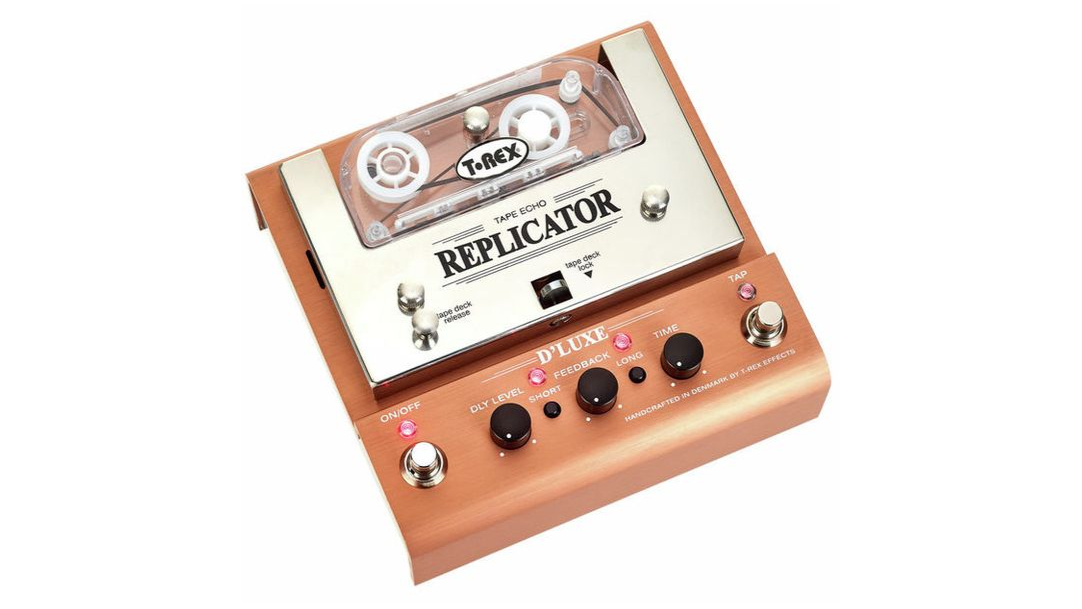
10. T-Rex Replicator D’Luxe Tape Echo
Our expert review:
Specifications
Reasons to buy
Reasons to avoid
Tape delay is often considered the Holy Grail of delay effects, and whilst many pedals attempt to recreate tape delay, none quite nail it… apart from the T-Rex Replicator D’Luxe Tape Echo. A genuine tape delay, shrunk into pedal format… although the word ‘shrunk’ should be used fairly loosely as it is still large compared to most effects pedals.
Equipped with a slot to add tape cartridges that look similar to cassettes, the Replicator D’Luxe records your signal directly onto the tape and then plays it back in one of three settings: short head, long head and a mix of the two. Each setting has its own unique character but all are unmistakably the sound of classic, beautiful tape delay.
As it is a genuine tape delay, you do need to purchase the tape cartridges separately and will need to replace them eventually (though as they wear, you will get the chorus effect that worn tape produces, which many love!) which means there are additional running costs over the lifetime of owning this unit. The other potential ‘running cost’ could come from repairs, as this is far more delicate than most other typical delay pedals.
The Replicator D’Luxe won’t be for the majority, but for delay die-hards, this is one delay you have to consider adding to your collection, because no other delay pedal – particularly tape delay pedal – comes close.
FAQs
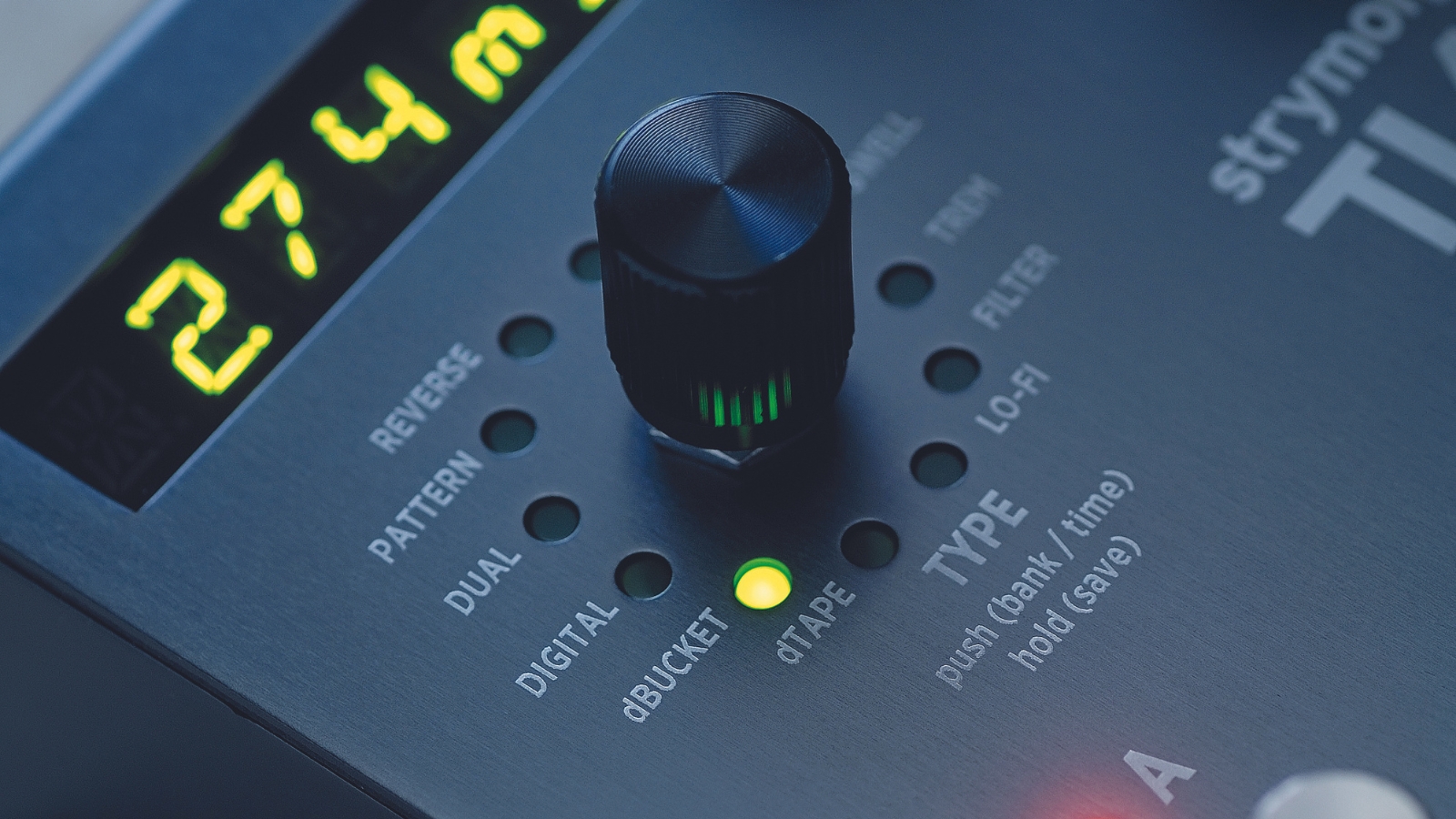
What does delay do on a pedal?
In its simplest form, a delay pedal works by ‘recording’ a sound you’ve played, and then playing it back to you. The number of repeats and the amount of time between each of these repeats can often be altered, with more delays over a long period contributing to a bigger, more ethereal effect, whereas a quick, single repeat gives a classic slapback delay. As with all effects pedals, a delay pedal allows you to add this effect at the press of a switch.
What are the different types of delay pedal?
Originally delay units were created by recording a sound to tape and it being played back at a slight time delay to the original signal. This was the birth of tape delay, a sought-after effect that many pedals try to replicate today. The reason it is particularly desirable is that tape has a tendency to stretch and wear, so the repeats wouldn’t be identical to the source playing, giving the delay a modulated, chorus effect.
Whilst this was a particularly desirable effect, it wasn’t all that easy to replicate in pedal form and hauling a tape delay machine around simply isn’t possible for most. The first delay pedals therefore required a slightly different method of producing a delay effect. Analog delays using bucket brigade technology, which delays the signal using a series of capacitors, with each stage holding a sample of the original sound (like water being passed through buckets as firefighters historically did) and then playing that sound back. The analog delay is typically warm and organic sounding, with vintage units still being used today.
Whilst the analog delay is a unique and independently excellent piece of gear, there is only so much you can control with analog delay pedals, and in modern music it is difficult to have an analog delay perfectly marry up to a specific tempo or have complex rhythms. Digital delay is much more malleable. Digital delay creates crystal clear, precise replications of your original guitar sound. Perhaps the most recognizable digital delay would be that used by The Edge from U2. It can be beat-matched easily, with many units coming equipped with a tap tempo option, allowing users to quickly sync up with their rhythm section.
Each of these delays have unique qualities and none is better than the other, they are brilliant in their own ways. Some larger digital units, such as the Strymon Timeline, have modes that replicate tape and analog delays, so this may be a way to get the feel of those different types of delay without having multiple pedals.
Are delay pedals worth it?
Pretty much every guitarist runs a delay pedal on their rig. Whether it’s John Mayer or John Frusciante, delay is a super versatile effect that can be used to subtly enhance your tone, or send it to otherworldly dimensions. It’s also an incredibly popular effect to use on vocals, drums, keys, and many other instruments, elevating sounds in the mix or pushing them further back, depending on how it's used.
Where does a delay pedal go in the chain?
Typically delay pedals go at the end of your chain. This is a rule for most time-based effects like reverbs too, as putting them in front of certain pedals can result in a washed-out sounding guitar that lacks definition. Of course, in some genres, like post-rock and shoegaze, players can use this sound to create ambiance or noise – but for the most part, it’s best to stick the delay near the end of the chain or through your effects loop if you have one.
A lot of players prefer to have their delay pedal go before their reverb pedal. Doing it this way means your delay tails will get affected by the reverb pedal, resulting in a more cohesive tone as your whole rig will sound like it’s contained within the space the reverb pedal creates. As we always say, feel free to experiment with pedal order because you never know what crazy sound you might end up with!
How we choose the best delay pedals
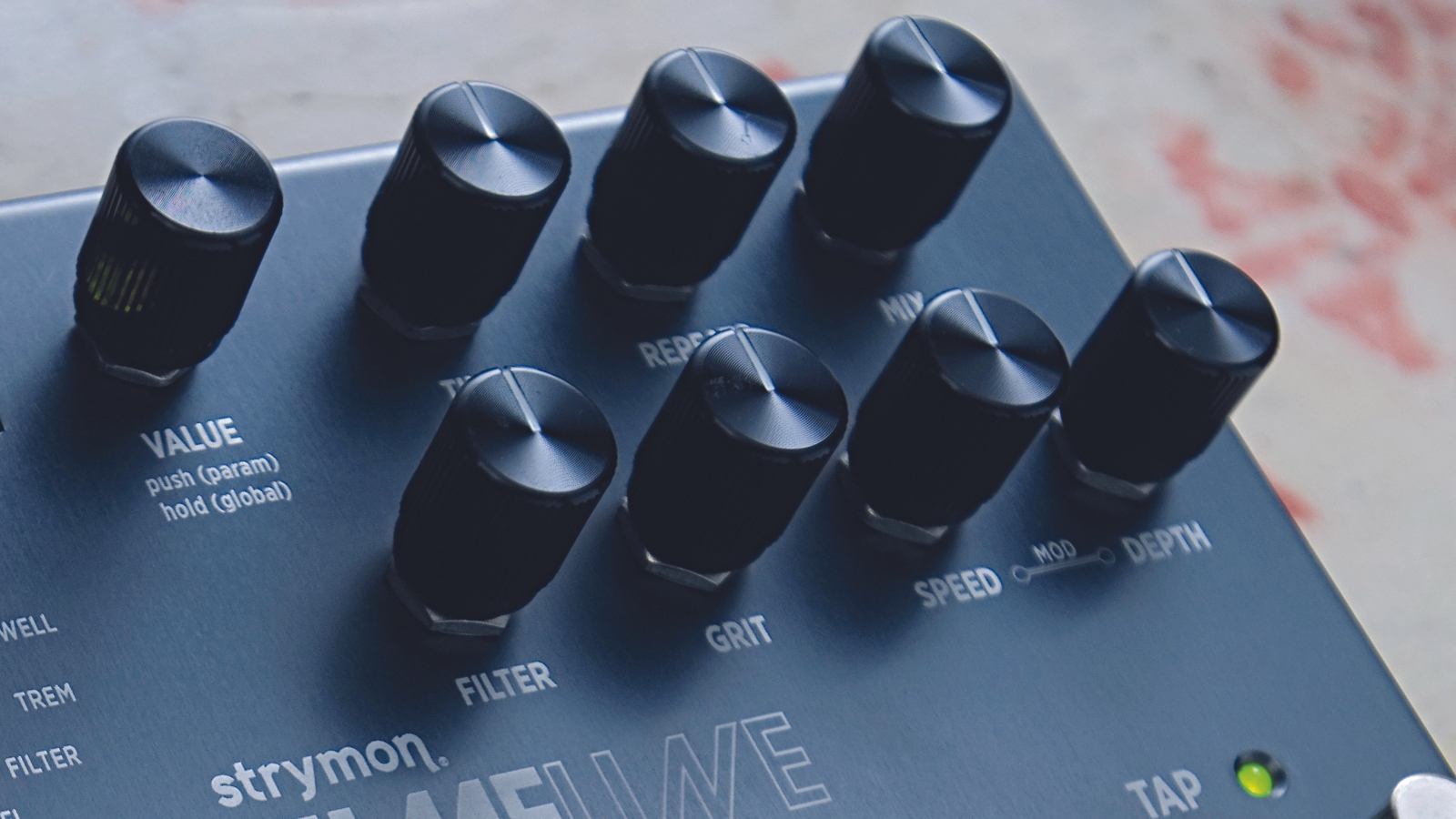
At Guitar Player, our team of experienced musicians have thoroughly explored the world of delay pedals, rigorously testing various models in real-world scenarios to provide you with practical and reliable reviews and recommendations.
Our handpicked selection of the best delay pedals showcases exceptional sonic qualities, intuitive controls, and reliable performance. We meticulously evaluate factors such as delay types, sound quality, versatility, build quality, and user-friendliness, ensuring that these pedals stand out among the competition.
With Guitar Player as your trusted resource, delve into our recommended delay pedals, all thoroughly vetted by fellow musicians. Discover the options that will elevate your sound, add depth to your playing, and ignite your creativity. Whether you seek classic analog warmth or modern digital precision, let Guitar Player guide you in finding the perfect delay pedal to enhance your musical journey.
Read more on how we test and review products.
Related buyer's guides
You can trust Guitar Player.
- Connect your pedals with the best patch cables
- On a budget? Here's our list of the best electrics under $1,000
- Plug in with one of the best guitar cables
- Get the best of both worlds with the best acoustic electric guitars
- Want an affordable amp? Well, here are the best guitar amps under $1,000
All the latest guitar news, interviews, lessons, reviews, deals and more, direct to your inbox!

Matt is a Junior Deals Writer here at Guitar Player. He regularly tests and reviews music gear with a focus on guitars, amps, pedals, modelers, and pretty much anything else guitar-related. Matt worked in music retail for 5 years at Dawsons Music and Northwest Guitars and has written for many music sites including MusicRadar, Guitar World, Guitar.com, Ultimate Guitar, and Thomann’s t.blog. A regularly gigging guitarist with over 20 years of experience playing live, writing, and recording in bands, he's performed everything from jazz to djent, gigging all over the UK in more dingy venues than you can shake a drop-tuned guitar at.
